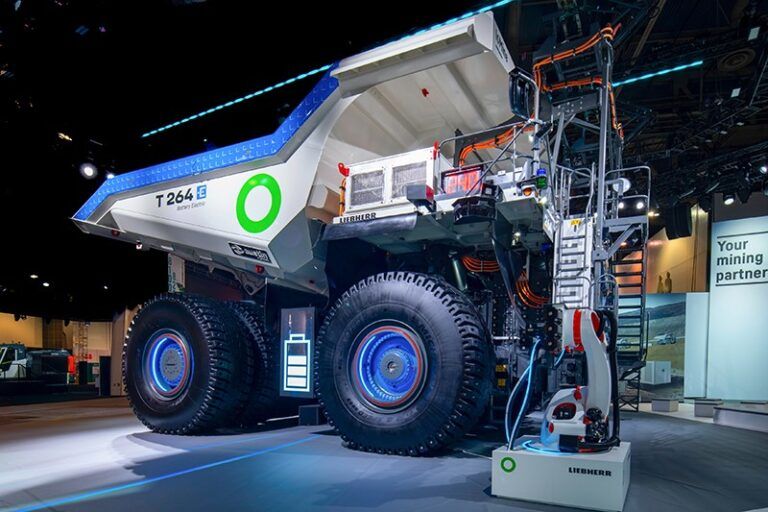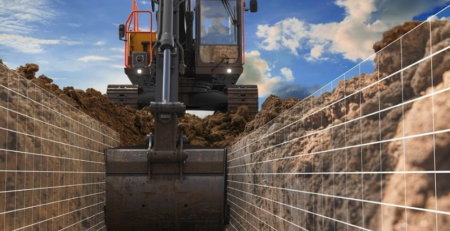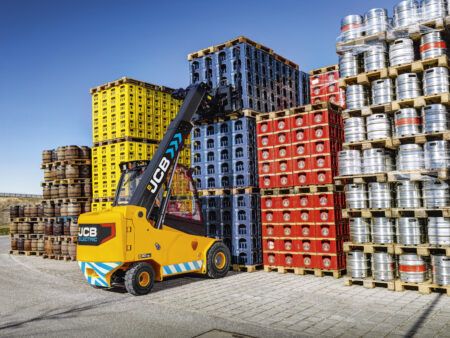At Bauma 2025, Liebherr was guided by its motto ‘Hands on the future’ with the group presenting future-oriented exhibits, technological innovations and practical solution concepts for increased efficiency, safety and environmental compatibility for the construction and mining industry.
On an exhibition area spanning over 15,000 m², the group presented more than 100 exhibits including earthmoving, material handling technology, mining, mobile and crawler cranes.
Beyond these segments, the group also hosted a varied programme with live shows on Liebherr Square, an InnovationLab, themed pavilions and a career lounge.
“We are actively shaping the future of the construction site by creating solutions that offer sustainable added value for our customers,” says Stephen Albrecht, managing director technology and digitalisation of Liebherr-International AG.
A key highlight on Liebherr Square was the live demonstration of the battery-electric, autonomous T 264 mining truck. With a payload of 240 tonnes, the machine has been designed to combine top performance with zero emission operation.
Its battery system, developed by the Australian mining customer Fortescue, which specialises in green technologies, enables both static charging via a robotic charging arm and dynamic charging.
For dynamic charging, the mining truck connects to the Liebherr lateral power rail while travelling and is automatically supplied with energy. This means the machine can work without interruption, significantly increasing the efficiency of the mining operation.
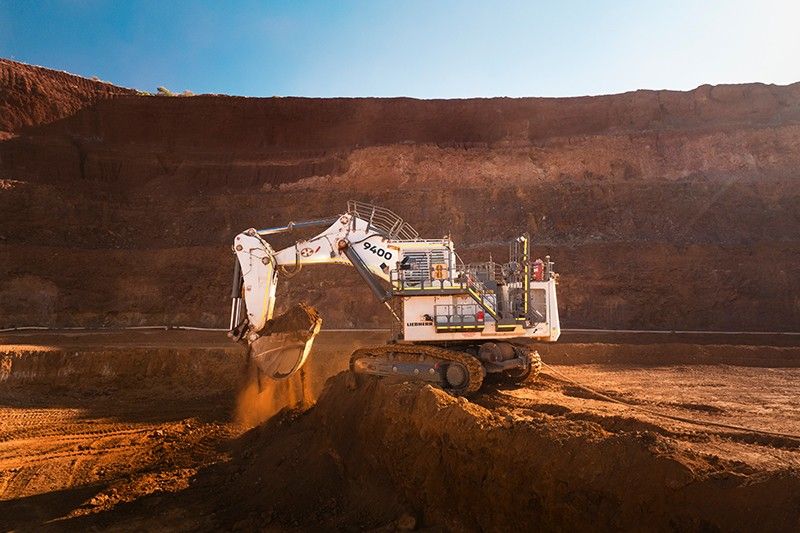
The electric R 9400 E mining excavator also works with zero local emissions. This 350-tonne machine, impressive shovelling movements were being demonstrated at the trade show, can be connected directly to the mains via a cable up to 300 metres long or to a battery energy storage system. The electricity at the trade show, required for the excavator movements amongst other things, was produced exclusively using regenerative sources.
In the neighbouring showcase for the earthmoving product segment, driverless machines were a hot topic. For the first time, the L 550 XPower wheel loader was being presented as an autonomous model.
The ‘Autonomous Job Planner’ web application can be used to pre-programme the work steps that will be executed autonomously by the machine. In addition, the driverless PR 726 crawler dozer and driverless R 926 crawler excavator showed what they are made of in a live demonstration. Both machines could be operated from the control desk in the Liebherr InnovationLab using the ‘Liebherr Remote Control’ technology.
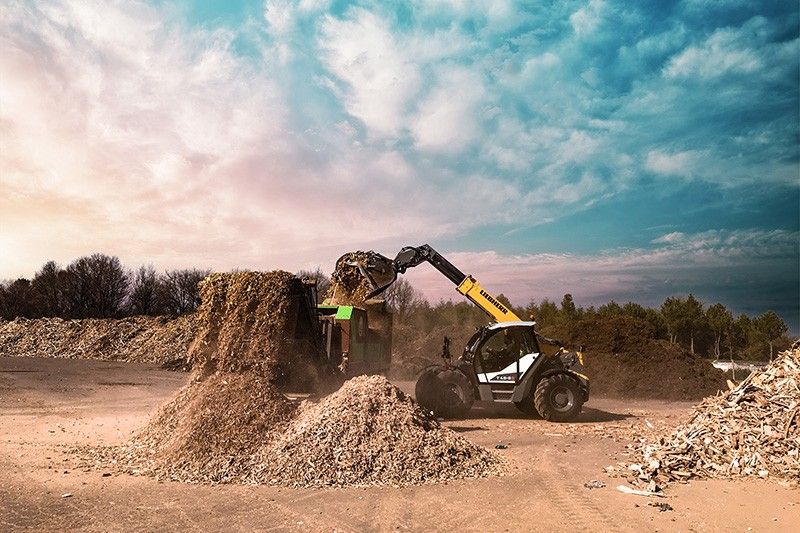
At Bauma, Liebherr presented numerous world, European and trade show premieres. For example, the earthmoving product segment celebrated a world premiere with the T 38-7s – the new Generation 6 telescopic handler. For this new version of the ‘S’ telescopic handler in the lower performance class of up to 4.2 tonnes, the load capacities have been increased by up to nine per cent. Newly available assistance systems extend the possible applications and make machine operation easier and safer. With the new T 48-8s telescopic handler, Liebherr is marking its entry into the 8-metre class, extending its product programme in the industry segment.
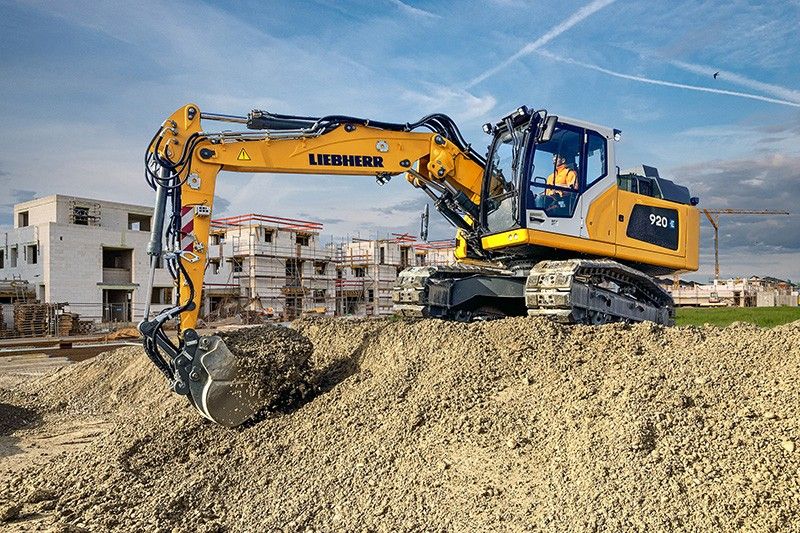
Also in the earthmoving segment were two new battery-electric excavators. The battery-electric R 920 G8-E has the same performance level as a crawler excavator with a combustion engine but sets itself apart thanks to its low noise development and zero emissions. This model is ideal for urban construction sites and for tasks in halls or tunnels where low noise and emissions values are key.
The battery-electric A 918 E wheeled excavator also scores highly with its low-noise and low-vibration operation. The electric drive significantly reduces carbon emissions compared to a conventional diesel excavator, while at the same time reducing energy consumption and thus energy costs. The reduced maintenance effort also contributes to the reduction of operating costs. The HS 8100.2 Dual Power cable excavator with zero local emissions, which enables both purely electric and a mixture of conventional and electric operation, is also celebrating its premiere.
As far as alternative drives are concerned, Liebherr presented the L 566 H – the first large wheel loader with a hydrogen engine. In cooperation with Strabag, the machine is currently being tested in the Kanzelsteinbruch quarry in Gratkorn (Austria), including refuelling with green hydrogen via an on-site filling station.
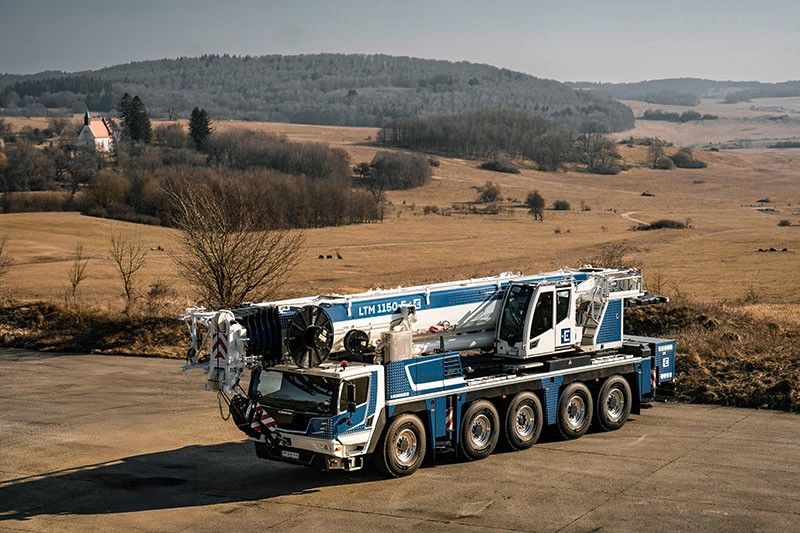
The Liebherr mobile and crawler cranes also celebrated a world premiere. The LTM 1150-5.4 E mobile crane, with its 111kW electric motor, delivers almost the same performance as a six-cylinder combustion engine and enables unlimited crane operation. The drive concept is based on the proven technology of the LTC 1050-3.1 E, but has been decisively boosted with an integrated battery pack. The crane can work self-sufficiently for up to four hours and only requires a low connected load for mains operation, as the battery acts as an efficient buffer.
For the first time, Liebherr also showcased the LR 1300.2 SX unplugged as the latest member of the unplugged crawler crane series. This 300-tonne crawler crane with battery-electric drive was designed specifically for high-rise construction and deep foundation. At Liebherr, machines that can run on batteries, without a cable connection, are called unplugged. Whether plugged in or unplugged, the performance and range of applications remain unchanged.
Images courtesy of Liebherr


